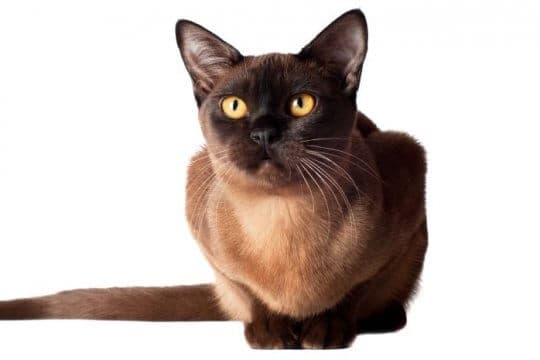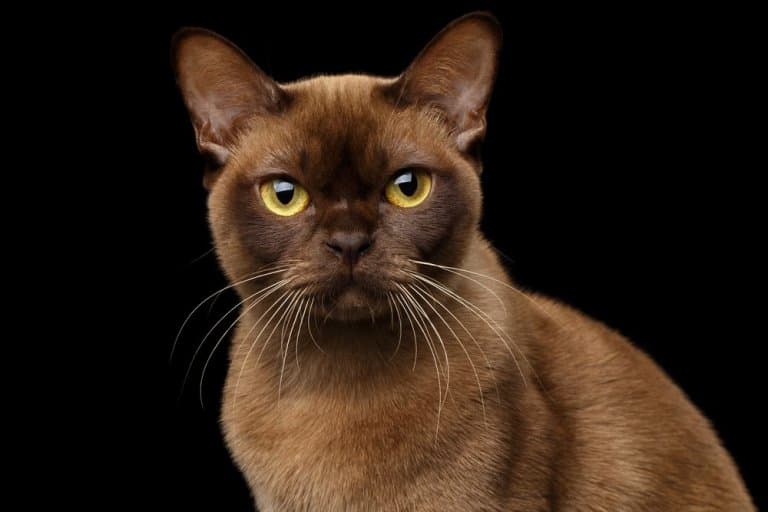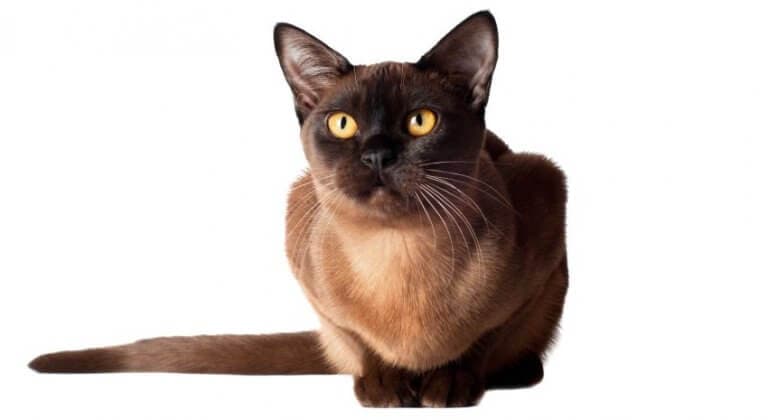
burmese
Loving, attentive, inquisitive, family-oriented
Overview
Origin
Burma/Myanmar
Life Span
12-16 years
Height
8"-10"
Weight
8-12 pounds
Group
Medium-sized short-haired
Price
$450-$3,000
History

The Burmese cat has an intriguing history. The breed's story begins with a chocolate-colored cat named Wong Mau.
Dr. Joseph Thompson of San Francisco brought Wong Mau home with him after a trip to Burma in 1930. Wong Mau was small with a more compact body than that of the Siamese, with a shorter tail, a rounded head, short muzzle, and round, widely spaced eyes.
Dr. Thompson also noted that the cat had darker brown points that accentuated her sable coat. Curious to see what offspring would look like, he bred her to a Siamese cat. The breeding produced a litter of kittens that included some with the appearance of Siamese cats and others that looked like their mother.
Dr. Thompson then mated Wong Mau to one of her brown kittens. This time, the litter contained three different kitten types: Some looked like Siamese cats, some resembled their mother, and some were dark brown with no points. The sable colored cats without points were ultimately used to create the foundation of the Burmese breed.
Burmese cats were first registered by the Cat Fanciers' Association in 1936, and the breed gained full recognition in 1957. Part of the reason for the delay was that some Burmese breeders were crossing their cats with Siamese —a practice that was ultimately prohibited. The outcrossings resulted in the development of the Tonkinese cat, so it certainly provided some benefits that cat fanciers can appreciate!
Today, CFA recognizes both the American Burmese and European Burmese. All major cat registries recognize Burmese cats, but not all colors are permitted within all registries.
Care

Nutrition
Burmese cats do not have any special nutritional needs. Like all cats, Burmese do require high-quality cat food with meat as the first ingredient.
Grooming
Thanks to their soft, fine, short coats, Burmese cats do not require much in terms of grooming. A weekly brushing can help remove dead hair, and a quick rub with a chamois can help bring out the shine in their coat.
Exercise
Burmese cats love to play so getting enough exercise isn't usually a problem. These energetic kitties have a reputation for carrying their favorite toys to their family members for fun games of fetch. They love to jump and climb, so you'll want to provide a durable cat tree.
Health
The Burmese is generally healthy, however some health issues can affect some members of the breed.
Breed Standard

Body
The body is of medium size, with substantial bone structure and good muscular development. The cat feels heavy for its size.
Head
Burmese cats have rounded heads with short, well-developed muzzles and a visible nose break when viewed in profile. The neck is well-developed.
Eyes
The eyes are round and set wide apart. Most Burmese cats have yellow eyes, however a select few will exhibit blue eye color. Burmese cats with blue eyes are disqualified for show, however they make fantastic—and beautiful—pets.
Ears
The ears are of medium size with broad bases and rounded tips. They tilt slightly forward.
Color
CFA recognizes Burmese cats in four colors: sable, platinum, blue, and champagne. Nose leather and paw pad colors complement the coat color.
Coat
Burmese cats have fine, glossy coats with a satiny texture. The coat is very short and lies close to the body.
Tail
The Burmese cat has a straight, medium-length tail.
Legs & Paws
The legs are well-proportioned and the paws have a distinct rounded shape.